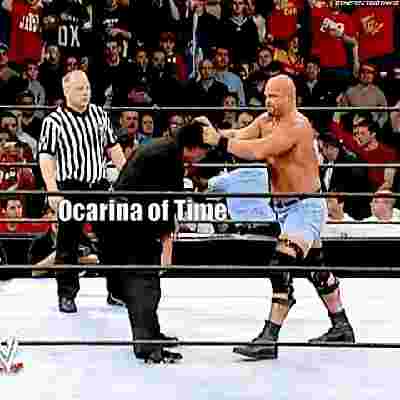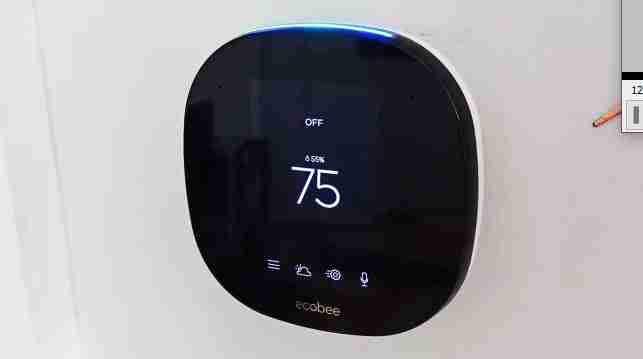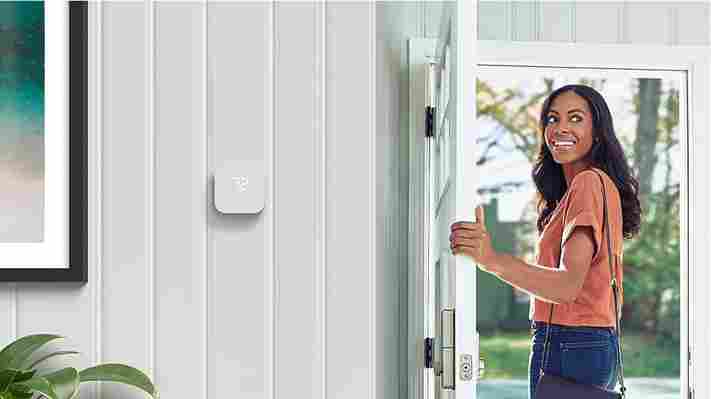WWE superstar Stone Cold Steve Austin has declared that Breath of the Wild is better than Ocarina of Time, thus ending the long-running debate over which Zelda game is best.
Austin crowned Nintendo’s open-air adventure as the best Legend of Zelda game of all time during an episode of The Broken Skull Sessions . In a 30-second quickfire question and answer session with fellow WWE superstar Cody Rhodes (thanks, VGC ), Rhodes is asked which is the best Zelda game. Rhodes quickly says: “Ocarina of Time, hands down.”
But not according to Austin.
The six-time WWE Champion interjects, saying: “No. No, dude. Breath of the Wild.” Rhodes, who is visibly taken aback by Stone Cold’s stunning pick, doesn’t seem to necessarily disagree, but admits that the Texas Rattlesnake has made “a bold choice.”
With a Metacritic score of 97 after 109 reviews, there’s no doubt that Link’s latest adventure was a hit with critics, but it can't top Ocarina of Time's ridiculous score of 99 – albeit from only 22 reviews.
But Breath of the Wild isn't just critically acclaimed: It's also sold 25.8 million copies as of December 2021, suggesting it's gone down well with fans, too.
Even though many gamers are of the opinion that Breath of the Wild is indeed the best Zelda game ever created (myself included), not everyone feels the same. That’s hardly a surprise, of course, as game reviews are subjective. You’ll very rarely find a game that – if ever – is universally loved by all. From my personal experience, though, Breath of the Wild does come at least somewhat close.
Now, where is Breath of the Wild 2?

Even though we highly doubt that Stone Cold Steve Austin will be the first in line to buy Breath of the Wild 2 when it releases, Nintendo’s successor is easily one of the most anticipated releases on the horizon.
Breath of the Wild 2 was recently pushed back to 2023 , as series producer Eiji Aonuma said Nintendo “decided to extend our development time a bit, and change the release to Spring 2023”. That means we should see Breath of the Wild 2 release sometime between March 20 and June 21.
But could one of the biggest games on Switch also be released on new hardware? Potentially. According to tech experts Digital Foundry, recent trailers for Breath of the Wild 2 include a number of graphical features that the Nintendo Switch would struggle to run based on its aging hardware.
We could, then, see a Nintendo Switch Pro or Nintendo Switch 2 release in line with Breath of the Wild 2, which would make a great showcase title if a more powerful console were to arrive.
Nintendo has been extremely coy about releasing a new Switch model, however, going as far as to say that the Nintendo Switch has only reached the mid-point of its lifecycle. The company also launched the Nintendo Switch OLED in October last year, making the possibility of new hardware even less likely.
Still, whether Breath of the Wild 2 releases solely on Switch or ushers in a new console, we can’t wait to see what Nintendo has in store. For now, though, Breath of the Wild is the best Zelda game of all time – and that’s the bottom line because Stone Cold said so.

Get 1,000 games for $10 including Superhot and Celeste, to support Ukraine
Indie developer Necrosoft Games has partnered with hundreds of other creators to launch a new fundraising bundle on gaming platform itch.io. The Bundle for Ukraine contains 991 games for a minimum donation of $10 / about £7.60 / AU$ 13.70, with all proceeds going to two organizations aiding the humanitarian effort in Ukraine.
The bundle includes several highly acclaimed indie titles, including time-stopping shooter Superhot, narratively-charged platformer Celeste, heartfelt A Short Hike, noir adventure Backbone, surreal puzzler Baba Is You, couch co-op shooter Towerfall Ascension, and roguelike Gonner.
It also packs many digital tabletop games, including solo journaling RPG The Wretched, queer empowering role-playing game Thirsty Sword Lesbians, and The Estate adventure collection for heroic rodent RPG Mausritter.
That’s only a slim selection of the hundreds of games included, from massive indie darlings to smaller titles from lesser-known developers.
You can grab the games for a minimum donation of $10. According to the bundle’s organizers, that’s a saving of 99% off the $6,544 the games would collectively cost at retail, but they “highly urge you to pay above the minimum if you can afford to do so”.
All money raised will be donated to International Medical Corps, a global non-profit that’s providing emergency medical services to Ukraine, and Voices of Children, a foundation that has been providing psychological support to children affected by Ukraine’s armed conflict since 2015.
As of press time, the Bundle for Ukraine has raised over $437,000 dollars, roughly 44% of its $1,000,000 goal, after being live for less than 24 hours. The average donation is currently $15.00 while the top contribution is a massive $1,536.00. The bundle will be live until March 18.

Analysis: the latest example of collective indie action
This isn’t the first time indie game developers have pulled together on Itch.io to raise money for a great cause. The Bundle for Racial Justice and Equality raised a staggering $8,000,000 in 2020 for the NAACP Legal Defense and Educational Fund and Community Bail Fund, supporting anti-racist protests and the Black Lives Matter movement.
That bundle also included an impressive selection of lauded indie games, such as Anodyne, Pikuniku, and Nuclear Throne, and was well received by players who not only wanted to grab a bunch of fantastic video games for cheap but support a social cause while doing so.
The Bundle for Ukraine is just the latest example of indie developers using their collective platforms for effective fundraising. The grassroots organization of the project means any developer who’s released their game on itch.io can take part, handing supporters a bunch of titles they may have never heard of alongside several indie darlings they’re desperate to play.
Given the response to the Bundle for Ukraine so far, and the rate at which donations have been piling in, it looks more than likely it will reach its $1,000,000 goal.
Amazon Smart Thermostat vs EcoBee SmartThermostat: which should you have in your home?
Smart Thermostats have been around for more than a decade now, and offer the ability to control your heating and cooling systems from your smartphone, even if you’re not at home. Amazon may be new to the smart thermostat market, but its first attempt has created quite a stir – not least because it is priced significantly lower than most of its rivals - including Ecobee.
The retail giant has taken a simpler approach to the design of its first smart thermostat but hasn’t skimped on the features that really matter, like artificial intelligence and the ability to lower your home energy bills.
Ecobee has become a key player in the smart thermostat industry. It offers a range of devices, but even its cheapest is over $100 more than Amazon’s offering.
We’ve pitted the Amazon Smart Thermostat against the EcoBee SmartThermostat (Yes, we wish these companies would come up with more imaginative names too) to find out how they differ and help you choose the right smart thermostat for your home.
Best Amazon Smart Thermostat and EcoBee SmartThermostat deals deals
Read on to discover how these two smart thermostats compare – or, if you’ve already decided which of the two you wish to buy, check out the best prices for each right now:
Price
As we alluded to earlier, the Amazon Smart Thermostat massively undercuts most of its rivals. Priced at just $60 (or $70 if you require a C-wire) , the Amazon represents excellent value for money. While the EcoBee SmartThermostat featured here is $250 – the same as the Nest Learning Thermostat, but four times that of the Amazon. Although Ecobee does offer cheaper models, with the Ecobee 3 Lite - its entry-level device costing $180 .
Price is particularly important with smart thermostats, as these are devices whose primary purpose is to save you money. Even if the device promises to lower your energy bills using artificial intelligence, the Amazon option already has a $190 head start. The Ecobee will have to save you $250 before even starting to pay for itself. For those looking to build out a smart home system, that $190 saving with the Amazon thermostat could go towards a lot of smart lights, plugs and other Alexa-controlled devices.
All that said, the Ecobee at least comes with a SmartSensor in the box, which can be used to help tell the thermostat about the temperature in a key room of your home, such as the lounge or bedroom. Ecobee sells these sensors in packs of two for $100..

Design
Both are a similar size and shape, and should look at home wherever they are installed. The Amazon measures 3.5in by 3.5in and is 0.84in thick, while the Ecobee is 4.29in square and 1in thick. Both come with trim plates designed to cover any marks, holes or unpainted parts of the wall left by your old thermostat.
The Ecobee is more rounded than the Amazon, and mostly black instead of white, but there really isn’t much to split their design. Neither can be bought in different colors, but their simple and inoffensive aesthetic means they will surely fit in well in any home.
Where the Amazon device has a simple LED display for showing little more than the temperature and heating or cooling mode, the Ecobee has a color LCD touchscreen. This can be used to set the temperature, but also dig into the thermostat’s settings menu, adjust the schedule and view the local weather forecast. A quad-core processor ensures the system responds quickly to tapping and swiping.
Unlike Nest thermostats and their rotating dials, both the Amazon and Ecobee are controlled by tapping or swiping. The Amazon thermostat has three touch-sensitive icons for raising or lowering the temperature, and a central icon for changing mode. The temperature of the Ecobee is changed by swiping up or down on the touchscreen.
The Ecobee has an integrated microphone and speaker, so you can control it by talking to Siri or Alexa. The Amazon thermostat misses out on this, and is instead controlled by speaking to other Alexa devices, like Echo smart speakers elsewhere in the home.

Features
Being smart thermostats, both of these devices connect to the internet via your Wi-Fi network, then can be controlled from home or remotely using a smartphone app. They also tap into smart home systems, but in Amazon’s case this is limited to the company’s own Alexa platform, which can be used to adjust the temperature with voice commands.
The Ecobee is much more flexible, with support for Alexa, plus Google Assistant, Apple HomeKit, Samsung SmartThings and IFTTT. This makes it the better option for smart homes that use systems other than Alexa. Also, because it has a microphone and speaker, you can speak directly to the Ecobee, which can run either Alexa or Siri natively. That’s right, we now live in a world where you can ask your thermostat to set a reminder, read the weather forecast, or tell a joke.
Energy-saving is a key feature of both thermostats. The Ecobee uses the company’s Eco+ system, which adjusts the temperature depending on humidity, your preferred schedule, and the price of peak/off-peak electricity. The system automatically adjusts when it senses you’ve left, then changes again when you return home.
The Amazon thermostat works in a similar way, using the Alexa Hunches system to work out what’s going on in your home. For example, if your smartphone location is away from home and no one has interacted with any of your Alexa devices for a while, the heating will be lowered.
Amazon says its thermostat uses Echo devices to further understand conditions in the home, but doesn’t say exactly how this works. With Ecobee, its thermostat can be connected to a number of sensors, one of which is included with the SmartThermostat.
These tell the thermostat the ambient temperature, giving the system a better idea of which rooms require warming or cooling. The user can then have the thermostat work to bring a certain room, like the bedroom, to a preferred temperature, regardless of how warm anywhere else is in the home.
Ecobee also sells window and door sensors, which instruct the thermostat to switch off the air conditioning if one is left open for more than five minutes.

Verdict
Deciding between these two smart thermostats comes down to two key factors – price and smart home integration. The Amazon model is considerably cheaper, so if you are happy to live within the Alexa walled garden, it is clearly the one you should go for. But if you prefer the greater integration of the Ecobee (or don’t have any Alexa devices) then that’ll be the one for you.